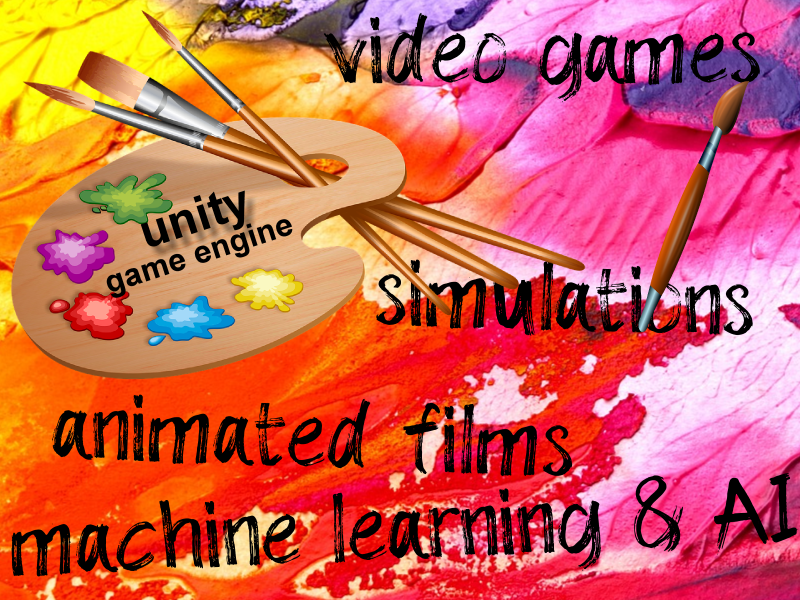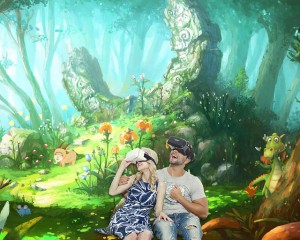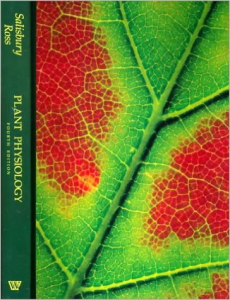This short story was published in an anthology of fiction with the theme, ‘transportation’.
Full citation:
Ehret, D.L. 2017. Moving Day in Moving Write Along, Second Storey Press, Nanaimo, Canada. ISBN 978-0-9959960-0-7
Hope you enjoy it.
“Out! Now! It’s getting to be late spring, dear, and I really think it’s time for you to leave home. I’ve provided you with everything you need,” Mom said. She always had a way of letting me know that she’d worked hard to provide for me, without coming right out and saying it. “Time to make your own way in the world.”
“But Mom, I’m still a bit green. Just a few more days, okay? A week at most, if this cool weather hangs around. You know how that slows me down.” The truth is, I get very lethargic in dull, dreary weather. It’s like I have no energy. I’ve sensed that Mom also feels the same. Maybe it’s because of that special bond I’ve felt with her my whole life. I wonder if all my siblings feel that same connection. An intimacy that’s as physical as it is emotional. Just as well—I don’t know who my father is or if I even have one, and I do not think Mom knows either. She doesn’t seem to care, if truth be told.
“Tara, the rest of your brothers and sisters have already taken to the wind,” she said. “You are the last.” She was playing on my guilty conscience. “It’s an amazing adventure, floating on air. Of course, I’ve only done it once, when I was your age, but I still remember the thrill. To put your life in the hands of that invisible current, trusting that it will take you to a safe and happy place … wonderful!”
And so I prepared to launch. I waited for an especially strong gust, wiggled a bit, and let go. I was suddenly aloft, riding the soft breeze. I rose on the current, gaining altitude quickly—I must have risen two meters in less than a second.
“Mom,” I yelled, “you should see this view!”, as I climbed another 20 meters. “There’s lots of grass and flowers, just like in our own neighbourhood. I also see massive structures with humans entering and leaving, and shiny, noisy things moving on really smooth soil. But oh, I’m getting very dizzy.” The turbulence was unanticipated, and I didn’t know how to control my flight. Suspended from my parachute, I twisted and turned like a dry leaf falling from its home in the autumn.
“Don’t worry, Tara,” Mom replied. “You won’t crash. Your feathery sail will keep you safe. Goodbye, my love. May you land upon fertile soil!” That’s my mom—always tending to the dramatic.
That was 8 hours ago. A long time for a youngster who’s only 10 days old. It’s seemed like an eternity of aimless drifting and mounting restlessness. When will I ever land? Wait a minute… I seem to be descending. Yes, there’s a definite drop in altitude. Or not. Guess I’ll find out soon enough.
Minutes later, I land with a thud. A quick inspection reveals no damage except for a small crack to my coat. How convenient—I’m getting thirsty and this crack should make it easier to soak up moisture from the ground. And I’ll need the water pressure to burst through my mantle. Looking around, I seem to be resting on silt. That’s also good news—it means I’m probably in some sort of dried-up stream bed. So I’ll wait for that drink.
My family has always been good at sizing up a situation and making the best of it. Because of our ability to take advantage, we’ve been labelled by certain humans as dirty, opportunistic, contriving weeds. At least this is what I heard from a passing crow, and they know things. But it is not our fault. As my mother used to say, “Evolution makes us as we are. Be proud of your lineage and your abilities.” Anyway, I have yet to meet one of those animals.
This is actually a rather beautiful spot. Lots of pine trees, and definitely more birds than at home. Hmm… that can’t be good. Those are goldfinches sitting on that low branch. Finches are particularly nasty—I’ve seen more than one of my siblings suffer the trauma of being devoured alive by them. No screaming mind you, but anguish just the same. Just as I am reflecting on the horror of that experience, I am distracted by a faint scraping sound in the distance.
Minutes pass, but it is definitely getting louder. And then I see it. A banana slug is bearing down on me with all the determination of a column of army ants in search of prey. I am not likely to be gobbled up because of my hard coat, but I am nevertheless in its way. Inevitably, it is upon me, and I feel its massive body press me further into the hard earth. My god, that hurts. But as the saying goes, short-term pain for long-term gain. At least I’m less visible to those devilish goldfinches, and now nicely tucked into the solid earth. I’m not likely to be dislodged should heavy weather hit.
And speaking of heavy weather, I see that dark grey clouds have formed, and raindrops begin to crash into the parched earth. Soon, a thin film of water forms on the surface, as the soil can no longer absorb the water as quickly as it arrives. The film grows to a torrent with dangerous eddies and whirlpools. Thank god for large slugs. Then, just as suddenly, the storm is over and the sun returns.
Now what? I feel a strange bloating sensation, as if I am about to explode. Water seems to be infiltrating my body, surging in through that crack. It’s hard to describe, but I’m feeling wonderfully energized. Water is infiltrating every cell and every space in between. Only now do I realize just how parched I have been since going through that drying cycle at home. And I’m growing—swelling and stretching, about to break through my skin.
Oh my god, I can feel my root emerging, slurping up even more water as it elongates into the depths of the soggy soil. Soon tiny hairs start to grow at its tip, beautiful translucent hairs, much like my mother’s, if I’m not mistaken. And now I crack open the other end of my confining armour, stretching and rapidly turning my pale tissue to brilliant green. The sun seems especially relevant now, more than just a ball in the sky. It’s like we have a relationship, a contract. I begin to sense a sweetness coursing through my veins. Delicious.
Weeks pass. I have become quite content in my now-familiar surroundings. My leaves are large and nicely exposed, my root is deep, and water is plentiful. Only once have I needed to resort to warfare against a winged intruder—I do not like these aphids. They suck the life and soul out of anything green. So I dealt that creature a chemical blow it will surely remember for life. Truth be told, it was easy to whip up a tasty but poisonous foliar brew.
Autumn passes quickly, followed by an uneventful winter. Not much surprise there, since I let my foliage die and live a reclusive life below ground, surviving on unsurprisingly bland starch in my swollen root. But I am feeling pretty confident now, as spring has come and I am starting to capture sunlight and pump it into new growth.
My flowers are now fully open. I have carefully laid out nectar in preparation for a guest or two bearing gifts of pollen. And eventually it comes. A bee so large that my slender flower stalks bend from its extreme weight. Clumsy stupid oaf, I think, but I must not be so judgmental. After the bee has departed, many more come in a flurry of activity, and they all seem to know exactly what they want and where to get it. Maybe I underestimated the intelligence of that very first bee.
More time passes. My flowers fade from brilliant yellow to brown. My focus shifts to the raising of my babies. Surprisingly, it is actually fulfilling to be a mother, and I think I’m pretty good at it. Some may question how a mom can provide adequate attention to hundreds of children. I’m doing my best to make sure that each of my offspring has the opportunity to make it in the world. Moving day will come for them as surely as it did for me, and from that point on, they will be on their own. Until then, what’s mine is theirs, unstintingly. My purpose, in a harsh existential sort of way, is solely to propagate and thus ensure many more generations of strong deep roots, lovely serrated leaves, and brilliant yellow flowers. Ah, and fluffy parachutes of course!
Yesterday was a bad day. A misadventure of epic proportions. A foolish young deer found me and, in the blink of an eye, tore off half my foliage—and in the same mouthful, killed most of my children! They are now resting at the bottom of a pool of stomach acid, hopefully without suffering. This is precisely why I like lots of kids. The status quo will only be satisfied if at least one of my children replaces me when I die. Is that asking too much?
Two more weeks pass. Most of the damage has been repaired; I’ve grown two new leaves and I’m feeling optimistic. I still have one flowering head left so will start preparing the kids for leaving home. Lesson One: be sure to travel light. Really, if your goal is to get far away from home as quickly as possible (don’t most kids want this?), you really have to watch your weight. Lesson Two: be prepared to wait up to a year after leaving home to actually start your new life. Don’t spend all your reserves in wild abandon in that first week of freedom. Lesson Three: be ready for life-threatening damage. Your grandmother used to tell the tale of being actually ripped out of the ground by a zealous human. She had to struggle for a whole month to regenerate from what was left of her root.
Finally, moving day has arrived.
“Out! Now!” I say. “It’s getting late in the spring, and I really think it’s time for you to leave home. I’ve provided you with everything you need.” As the words come out, they sound vaguely familiar.
Suddenly a young female human appears. She has what I’m told are called pigtails. A small hand with purple fingernails reaches down and plucks my last remaining flower from my body. As I watch in horror, she puckers her lips and blows. Instantly my children are gone with the wind. Is this kindness? Is she trying to help me coax my children out into the world? Then I notice one remaining child still attached to the discarded flower head laying on the ground. This is a special child because she has no father, just as I did not have a father. Aster is her name and I know that should she survive to adulthood, she will emulate me in numerous quirky ways. She will arrange her leaves in a silly counter clockwise fashion, just as I do. And rotate her flowers to the sun, just as I do. With no father, we are identical, just as I am to my mother. No pollination you see, so female bears female bears female in an unbroken series.
At this moment, just when I think that all is lost for Aster, the human reaches down, picks up my child, and gives one more blow. An especially gentle puff. And Aster finally sails away, just as I did one year ago. “Goodbye my love”, I say. “May you land upon fertile soil”.







 Science does not approve of the practice of attributing human characteristics to non-humans. To say that a bird is ‘happy’ to be flying about on a sunny day is not permitted. But if the cause is to educate, is it permissible to anthropomorphise? To improve engagement with the public or to get a point across? I’ve sometimes fantasized about what it might be like to be a plant. Wouldn’t it be wonderful to craft a video game about plants with feelings? Or to actually be a plant? Anger that your leaves are infested with mildew? Relief that the rain has finally arrived after months of drought? Or let’s take the point of view of a molecule of water, as it journeys through its water cycle. We could imagine all kinds of sociological undertones as a water molecule interacts with all those other water molecules struggling to evaporate (me first, me first). The point is to use this tool to get people thinking about, and appreciating, science. With so much aversion to science these days, I think it’s ok, and perhaps necessary, to bend the rules. If people are to embrace all the wondrous detail of the natural world, we need them to identify with that world. And I think the plants would agree.
Science does not approve of the practice of attributing human characteristics to non-humans. To say that a bird is ‘happy’ to be flying about on a sunny day is not permitted. But if the cause is to educate, is it permissible to anthropomorphise? To improve engagement with the public or to get a point across? I’ve sometimes fantasized about what it might be like to be a plant. Wouldn’t it be wonderful to craft a video game about plants with feelings? Or to actually be a plant? Anger that your leaves are infested with mildew? Relief that the rain has finally arrived after months of drought? Or let’s take the point of view of a molecule of water, as it journeys through its water cycle. We could imagine all kinds of sociological undertones as a water molecule interacts with all those other water molecules struggling to evaporate (me first, me first). The point is to use this tool to get people thinking about, and appreciating, science. With so much aversion to science these days, I think it’s ok, and perhaps necessary, to bend the rules. If people are to embrace all the wondrous detail of the natural world, we need them to identify with that world. And I think the plants would agree.
